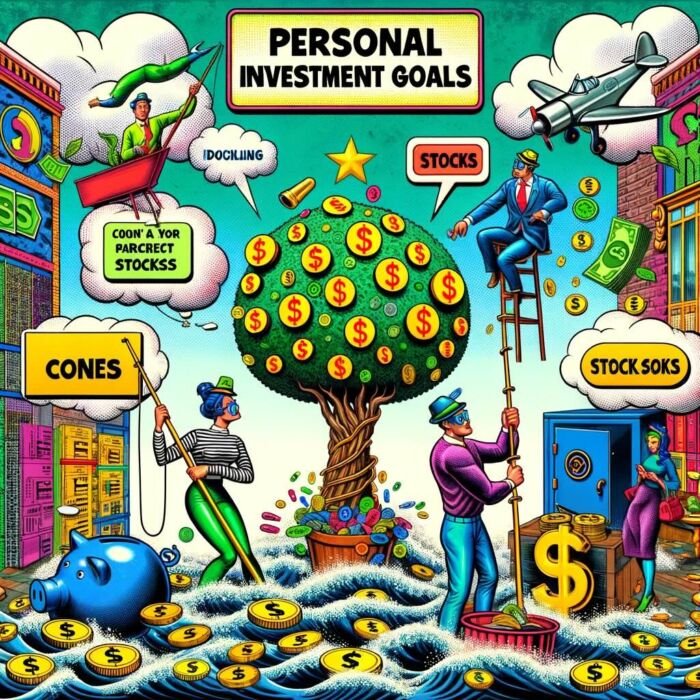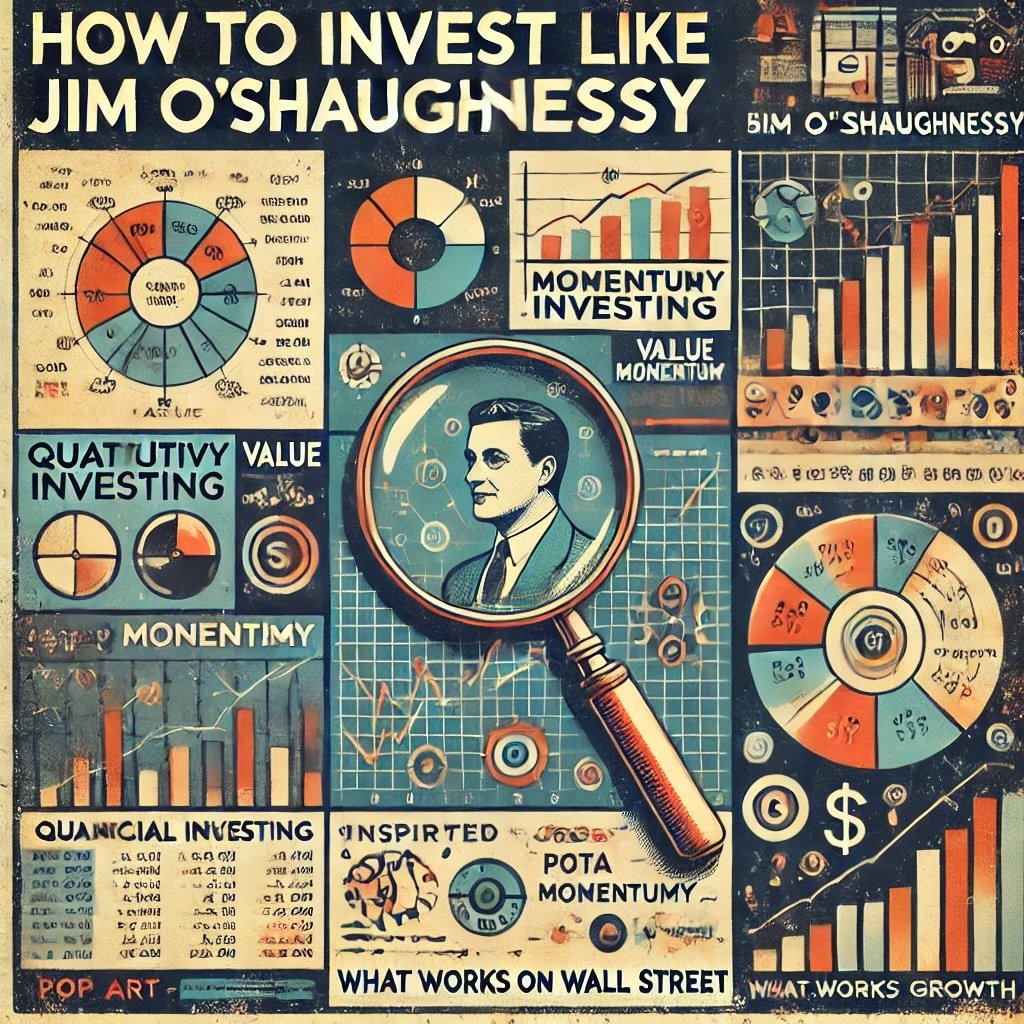When it comes to sagacity in investing, few names command as much respect as Charlie Munger and his investment checklist. As the esteemed vice-chairman of Berkshire Hathaway and the trusted right-hand man of Warren Buffett, Munger’s impact on the world of finance has been profound. Known for his razor-sharp wit, immense wisdom, and unyielding integrity, he has made a name for himself as a titan of value investing. His decades-long career is a testament to his unrivaled insight into the workings of businesses, markets, and human psychology.

Charlie Munger’s Unique Approach to Investing: The Investment Checklist
Central to Munger’s extraordinary success in the world of investing is a unique tool, often overlooked for its simplicity but powerful in its efficacy – the investment checklist. Unlike many investors who get swayed by market sentiment or speculative hype, Munger relies on a systematic, disciplined approach to evaluate potential investments. This rigorous checklist method, an ensemble of crucial criteria that a company must meet before it warrants his investment, allows him to keep his analysis grounded in rationality and objectivity.

Importance of the Topic: Invaluable Lessons For Investors
Exploring the intricacies of Munger’s investment checklist offers invaluable lessons for all investors, whether beginners venturing into the realm of investing or seasoned professionals looking to refine their strategies. His method underscores the primacy of comprehensive research, clear-headed logic, and a meticulous evaluation in making investment decisions. It reaffirms the principle that successful investing isn’t about playing the prediction game or trying to time the market but is instead about making well-informed decisions rooted in a deep understanding of a company’s intrinsic value. Through the lens of this article, we will dissect Munger’s checklist, providing a roadmap for investors aspiring to incorporate his disciplined, value-driven approach into their investment practices.

Who is Charlie Munger? Background and Early Life
Charles T. Munger, better known as Charlie, was born in Omaha, Nebraska, in 1924. From a young age, Munger demonstrated an inherent curiosity and an insatiable appetite for knowledge – characteristics that would go on to shape his life and career. He studied mathematics at the University of Michigan before attending Harvard Law School, where he excelled and laid the foundations for his rigorous analytical approach.
Career Highlights and Achievements
Munger began his career as a real estate attorney but quickly realized his passion for investing. He founded his own investment firm, Wheeler, Munger, and Company, in 1962. Despite some early setbacks, Munger’s investment philosophy of focusing on long-term value creation began to bear fruit. Over time, his sharp business acumen and knack for identifying valuable investment opportunities earned him not only financial success but also recognition as one of the most astute investors of his time.

Partnership with Warren Buffett and Berkshire Hathaway
The partnership with Warren Buffett, a long-time friend from Omaha, truly catapulted Munger’s career to new heights. Buffett was impressed with Munger’s intellectual rigor and investment acumen, and in 1978, Munger became the vice-chairman of Berkshire Hathaway, Buffett’s investment conglomerate. This partnership, which has lasted for over four decades, has seen Berkshire Hathaway grow into one of the most successful companies globally, with Munger’s influence evident in many of its investment decisions. The collaboration between these two extraordinary investors is often viewed as a shining beacon of synergy, trust, and shared vision in the corporate world.
source: Investor Center on YouTube

Understanding Munger’s Investment Philosophy
Explanation of Value Investing
At the core of Charlie Munger’s investment philosophy is the principle of value investing. This approach focuses on buying securities that appear underpriced by some form of fundamental analysis. In other words, Munger looks for opportunities where he can purchase a dollar’s worth of value for considerably less. This strategy hinges on the ability to accurately assess the intrinsic value of a company, which requires thorough research, a deep understanding of the business, and a fair bit of patience.
Introduction to Munger’s ‘Latticework of Mental Models’
One of Munger’s most significant contributions to the world of investing is his concept of the ‘latticework of mental models.’ This refers to the idea that one must use knowledge and insights from various disciplines, such as psychology, economics, history, mathematics, and more, to make better investment decisions. In Munger’s view, a single perspective is never enough. Instead, a multi-disciplinary approach provides a more holistic and comprehensive understanding, enabling better judgment and decision-making.

Charlie Munger’s Long-Term Investment Approach
Munger is a strong proponent of a long-term investment strategy. He believes that the real value of an investment emerges over an extended period, a principle he has often applied in his own investment decisions. This long-term perspective allows him to ignore short-term market fluctuations and focus instead on the fundamental value of a business. It also reflects his belief in the power of compounding, a key element of his investment success. Munger’s patience and long-term focus serve as a lesson for investors, highlighting the importance of resisting the urge for quick profits and instead planting seeds for long-term growth.
source: CMQ Investing on YouTube

The Concept of an Investment Checklist
An investment checklist, in essence, is a comprehensive list of critical questions that investors need to answer before deciding to invest in a particular company, asset, or project. Think of it as your own pre-flight checklist, but in the world of investment. Like a seasoned pilot reviewing every key factor of the aircraft before take-off, investors run through their checklists to ensure no critical detail has been overlooked.
This checklist is often fine-tuned over time, based on experiences, wisdom garnered from past investment decisions, and changing market scenarios. It may include questions related to a company’s financial health, such as its debt ratios, revenue growth, and profit margins. But it might also consider non-quantitative elements, like the company’s leadership, its competitive position, and its overall business model.
The best part about an investment checklist is that it is not a one-size-fits-all tool. Each investor can tailor it to their investing style, risk tolerance, and objectives. So while Warren Buffett might be interested in the long-term sustainability of a company’s competitive advantage (‘moat’), a day trader might be more focused on short-term price volatility.
Importance of an Investment Checklist in the Decision-making Process
Having an investment checklist is akin to having a trusted ally by your side. This ally ensures that you don’t let your emotions get the better of you when making investment decisions. After all, the stock market is notorious for testing the nerves of even the most seasoned investors. By providing a systematic and disciplined approach, the checklist helps investors avoid hasty decisions made under the influence of fear or greed.
In addition, a well-crafted checklist helps an investor maintain consistency in their investment process. It allows for a thorough and standard way to evaluate each investment opportunity, making it less likely to overlook critical information or fall prey to cognitive biases, which often cloud judgement and lead to sub-optimal decisions.
A good investment checklist also promotes the concept of “margin of safety,” a principle championed by the iconic value investor, Benjamin Graham. This principle suggests that one should only invest when there’s a significant difference between a company’s intrinsic value and its market price. By asking pertinent questions about the company’s financial health and prospects, the checklist helps an investor determine this margin of safety.

Examples from Other Industries (Aviation, Medicine, etc.)
The concept of checklists isn’t exclusive to investing. They play a crucial role in many other industries, where the cost of errors can be significant. Let’s delve into a few examples.
In aviation, pre-flight checklists are an integral part of safety protocols. Pilots systematically review a series of crucial factors before each flight, including equipment checks, weather conditions, and emergency procedures. These checklists help ensure nothing is overlooked, thereby minimizing the risk of accidents due to human error.
Similarly, in medicine, surgical checklists have become a norm, and for good reason. A study published in the New England Journal of Medicine demonstrated a significant decrease in both death rates and surgical complications when surgical checklists were implemented. The checklist, which includes steps like confirming the patient’s identity, the surgical site, and the procedure to be performed, ensures that every member of the surgical team is on the same page and helps prevent potentially catastrophic errors.
In the construction industry, checklists are used to ensure that safety regulations are adhered to and that every aspect of the construction process, from material selection to final inspection, is completed appropriately. Such thoroughness not only ensures the quality of the completed structure but also the safety of the workers involved in the process.
Bringing it all back home, we see that the wisdom of checklists, be it in aviation, medicine, or construction, applies to investing as well. By developing a systematic way of evaluating potential investments, an investor can not only enhance their decision-making process but also keep their emotional biases at bay, ultimately improving their overall investing outcomes.
source: Robin Speziale on YouTube

Charlie Munger’s Investment Checklist
Charlie Munger, the long-time business partner of Warren Buffett and vice chairman of Berkshire Hathaway, is a strong proponent of the investment checklist. Over his illustrious investment career, he has developed his checklist, incorporating key principles of value investing. Here are some of the critical items on Munger’s checklist:
- Understand the Business: Munger insists that investors should only invest in businesses they thoroughly understand. This understanding encompasses the company’s products or services, its competitive landscape, and the industry it operates in.
- Sustainable Competitive Advantage: Often referred to as a ‘moat’, this is the unique advantage that allows a company to withstand competitive pressures and generate high returns on capital. This could be due to superior technology, brand reputation, network effects, or regulatory licenses.
- Quality Management: Munger places great emphasis on the quality of the company’s management team. He looks for honest, competent leaders who are shareholder-oriented and have a long-term vision.
- Financial Strength and Profitability: The company’s financial statements should exhibit solid financial health, evidenced by low debt, high and consistent profitability, and a strong return on invested capital.
- Valuation: Finally, Munger emphasizes the importance of price. Even the best business isn’t a good investment if the price is too high. He encourages investors to determine the intrinsic value of the company and then wait for the market price to drop significantly below that value, thus providing a margin of safety.
Importance of Each Item on the Checklist
Understanding each item on Munger’s checklist is vital for any investor hoping to apply his investing principles. Let’s delve into the importance of each point.
Understanding the Business: Investing in a business you don’t understand is like navigating a ship in uncharted waters. You’ll be ill-prepared to anticipate changes or make crucial decisions. By sticking to businesses you understand, you increase your chances of correctly estimating the company’s future cash flows, which is essential for determining its intrinsic value.
Sustainable Competitive Advantage: A company with a wide moat can fend off competition and protect its profits, thereby ensuring long-term growth and stability. In a world of rapid technological changes and disruptive innovations, a solid moat is more important than ever.
Quality Management: Even a great business can be run into the ground by inept or dishonest management. On the other hand, a competent and shareholder-friendly management team can add tremendous value by effectively deploying resources, making strategic decisions, and steering the company through tough times.
Financial Strength and Profitability: A company’s financial health is a key determinant of its long-term survival and growth. Firms with strong finances are more resilient to economic downturns and better positioned to invest in growth opportunities. High and consistent profitability signals a successful business model and a potential moat.
Valuation: No matter how good a company is, its stock can be a terrible investment if the price is too high. By insisting on a margin of safety, Munger ensures that he not only stands to gain from the company’s growth but also protects his downside if things don’t go as expected.

How the Checklist Helps in Making Sound Investment Decisions
Munger’s checklist provides a disciplined and systematic approach to investment decision-making. By sticking to the checklist, investors can avoid common pitfalls such as investing in fad industries they don’t understand, getting swayed by charismatic but inept CEOs, or overpaying for hot stocks.
By emphasizing the importance of moats, Munger’s checklist helps investors focus on companies that can sustain their profits in the face of competition. This long-term perspective can be a major advantage in today’s market, where many investors are overly focused on short-term gains.
The insistence on financial strength and profitability helps weed out companies that are overly reliant on debt or have unproven business models. This can save investors from the fallout of financial distress or bankruptcy.
Finally, the focus on valuation ensures that investors don’t get carried away by market euphoria and end up paying sky-high prices for stocks. By waiting for a significant margin of safety, investors can protect their capital and enhance their potential returns.
In sum, Munger’s checklist is a powerful tool that encourages thorough research, promotes disciplined decision-making, and helps investors maintain a long-term perspective. Its simplicity belies the profound wisdom it encapsulates, making it a worthy guide for anyone venturing into the world of investing.

Case Studies: The Checklist in Action
A couple of notable examples spring to mind where Charlie Munger’s investment checklist was put into effective action.
Examples of Investments Where Munger Used His Checklist
Costco: Munger’s investment in Costco is a perfect example of his checklist at work. The wholesale giant’s business model was simple and easy to understand. It revolved around selling products at prices as close to cost as possible, making up the profits with membership fees – a concept Munger clearly understood.
Costco’s moat was its ability to sell goods at prices competitors found hard to match, thanks to its membership model and economies of scale. The company also had a strong, shareholder-friendly management team, led by co-founder and long-time CEO, Jim Sinegal.
The company’s financial strength was evident in its consistent growth and high return on capital. Even though Costco’s shares weren’t cheap by traditional valuation metrics, Munger recognized the value in its strong brand, loyal customer base, and consistent growth, and decided to invest. His stake in Costco has since become one of his most successful investments.

See’s Candies: When Munger and Buffett purchased See’s Candies in 1972, it had all the hallmarks of a ‘Munger checklist’ investment. The company had a simple, understandable business model, selling high-quality chocolates and candies. It had a strong brand and loyal customer base, representing its moat.
See’s management was competent and honest, with a clear focus on maintaining the quality of its products. The company was highly profitable, with robust financials. Although the price wasn’t cheap, Munger and Buffett recognized the company’s intrinsic value and the potential for increasing prices, thus giving them a margin of safety.
Analysis of the Decision-making Process
In both these investments, you can see Munger’s investment checklist in action. He invested in businesses he understood, with a clear competitive advantage, quality management, robust financials, and a reasonable price compared to their intrinsic value.
The decisions were not based on the current market sentiment, the latest economic indicators, or complex financial models. Instead, they focused on the fundamental characteristics of the businesses. Munger’s investment style eschews short-term speculation in favor of long-term value creation, based on solid business principles.
Lessons Learned from the Case Studies
The most important lesson from these case studies is the importance of sticking to your investment principles, no matter what the market is doing. Whether it was the popular discount wholesaler or the boutique confectioner, Munger stayed true to his checklist, resulting in successful investments.
Another key lesson is the importance of patience. Munger didn’t jump at every investment opportunity that came his way. Instead, he waited for the right businesses at the right prices, displaying the patience that is characteristic of successful investors.
These case studies also highlight the importance of understanding the business. Without a thorough understanding of the business model and industry dynamics, it’s difficult to accurately assess a company’s competitive advantage or the competence of its management.
Finally, these case studies underscore the importance of a margin of safety. No matter how good a company is, it’s not a good investment if the price is too high. By insisting on a significant margin of safety, Munger ensured that he stood to gain from the companies’ growth and was protected on the downside.
In essence, Munger’s investment checklist isn’t just a guide to investing—it’s a guide to rational, disciplined decision-making. Whether you’re a seasoned investor or just starting out, it offers valuable insights that can help you navigate the often turbulent waters of the investment world.

How to Implement Munger’s Investment Checklist
Implementing Munger’s investment checklist requires more than just understanding the points on the checklist. Here are some practical steps:
Practical Steps to Using an Investment Checklist
Educate Yourself: You need a foundational understanding of finance and investing. This includes knowing how to read financial statements, understanding basic financial metrics, and having an understanding of different business models and industry dynamics. There are numerous books, online courses, and other resources available to help you gain this knowledge.
Research: Once you’ve selected a potential investment, begin your research. Start with the company’s annual reports, investor presentations, and earnings call transcripts. Understand the business model, the products or services it offers, and its competitive landscape.
Analyze the Moat: Look for the company’s competitive advantage or ‘moat.’ This could be a strong brand, a network effect, cost advantages, superior technology, or some other factor that sets the company apart from its competitors.
Assess the Management: Evaluate the quality of the company’s management team. This can be done by looking at their past performance, their communication with shareholders, and their capital allocation decisions.
Evaluate Financial Health and Profitability: Review the company’s financial statements. Look for low debt levels, strong cash flow, consistent profitability, and a high return on capital.
Determine the Intrinsic Value and Margin of Safety: Finally, determine the company’s intrinsic value. There are several methods to do this, including discounted cash flow analysis, earnings multiples, and book value comparisons. Once you have an estimate of the intrinsic value, compare it with the current market price to see if there’s a margin of safety.

Adapting the Checklist to Personal Investment Goals and Strategies
Munger’s checklist is a fantastic starting point, but it’s crucial to adapt it to your personal investment goals and strategies. For instance, if you’re a growth-oriented investor, you might place more emphasis on the company’s future growth prospects than its current profitability. Or if you’re an income investor, you might look for companies with a strong dividend history and the ability to sustain and grow dividends in the future.
It’s also important to consider your risk tolerance and investment horizon. If you have a low risk tolerance, you might want to include additional checks for downside risks. If you have a short investment horizon, you might want to focus more on the company’s short-term prospects and less on its long-term competitive advantage.
The Role of Discipline in Adhering to the Checklist
Discipline is crucial when it comes to following an investment checklist. The stock market can be a roller coaster of emotions, and it’s easy to get swayed by fear or greed. However, by adhering to the checklist, you can keep your emotions in check and make rational decisions.
Remember, the goal of the checklist is to ensure that you thoroughly analyze each investment and don’t overlook any critical information. It’s not about finding reasons to invest in a particular company—it’s about ensuring that you’re making a sound, informed decision.
Even if you find a company that ticks all the boxes on your checklist, that doesn’t necessarily mean you should immediately invest all your money in it. It’s also important to consider portfolio diversification and position sizing.
In summary, implementing Munger’s investment checklist involves education, research, and discipline. By adapting the checklist to your personal investment goals and strategies, you can create a powerful tool that guides your investment decisions and helps you achieve your financial goals.
source: Investing with Tom on YouTube

Conclusion: Munger’s Philosophy and the Importance of an Investment Checklist
Charlie Munger, the legendary investor and partner of Warren Buffett, has demonstrated a unique investment philosophy throughout his extraordinary career. This philosophy, guided by a simple yet comprehensive checklist, has been a cornerstone of his success.
The checklist, which encourages investors to understand the business, evaluate its competitive advantage, assess management quality, scrutinize financial health and profitability, and ascertain the intrinsic value with a margin of safety, epitomizes Munger’s approach to investing. It champions thorough due diligence, rational decision-making, and steadfast discipline.
An investment checklist, as advocated by Munger, serves as a guiding beacon, helping investors navigate the often tumultuous and unpredictable waters of the stock market. It assists in structuring one’s thoughts, mitigating cognitive biases, and ensuring a comprehensive evaluation of potential investments.
How the Checklist Contributes to Munger’s Investment Success
Munger’s investment checklist has been instrumental in his impressive investment success. By religiously adhering to the principles of his checklist, he has consistently made wise investment decisions, often swimming against the tide of popular opinion.
His investments in companies like Costco and See’s Candies are testaments to the efficacy of his checklist. By meticulously examining each company through the lens of his checklist, Munger has been able to identify and invest in businesses with enduring moats, strong management, robust financials, and most importantly, a significant margin of safety in terms of their valuation. His unwavering discipline in following this checklist has resulted in these successful investments.

Implement Munger’s Checklist Method With Your Own Investing
As you embark on your investment journey or look to refine your existing strategies, I encourage you to adopt Munger’s investment checklist. Of course, as with any strategy, you must tailor it to your personal investment goals and circumstances. However, the core tenets—understanding the business, recognizing a strong moat, appraising the management, analyzing the financials, and ensuring a reasonable valuation—should remain integral to your process.
Remember, investing is as much about character as it is about intellect. The discipline to follow your checklist, the patience to wait for the right opportunities, and the courage to act when they arise are just as important as understanding the checklist items themselves.
In conclusion, Munger’s investment checklist is more than just a set of investing principles; it’s a roadmap to sound decision-making, a shield against cognitive biases, and a proven tool for achieving long-term investment success. As Munger himself once said, “No wise pilot, no matter how great his talent and experience, fails to use his checklist.” So why should you?
Important Information
Investment Disclaimer: The content provided here is for informational purposes only and does not constitute financial, investment, tax or professional advice. Investments carry risks and are not guaranteed; errors in data may occur. Past performance, including backtest results, does not guarantee future outcomes. Please note that indexes are benchmarks and not directly investable. All examples are purely hypothetical. Do your own due diligence. You should conduct your own research and consult a professional advisor before making investment decisions.
“Picture Perfect Portfolios” does not endorse or guarantee the accuracy of the information in this post and is not responsible for any financial losses or damages incurred from relying on this information. Investing involves the risk of loss and is not suitable for all investors. When it comes to capital efficiency, using leverage (or leveraged products) in investing amplifies both potential gains and losses, making it possible to lose more than your initial investment. It involves higher risk and costs, including possible margin calls and interest expenses, which can adversely affect your financial condition. The views and opinions expressed in this post are solely those of the author and do not necessarily reflect the official policy or position of anyone else. You can read my complete disclaimer here.





